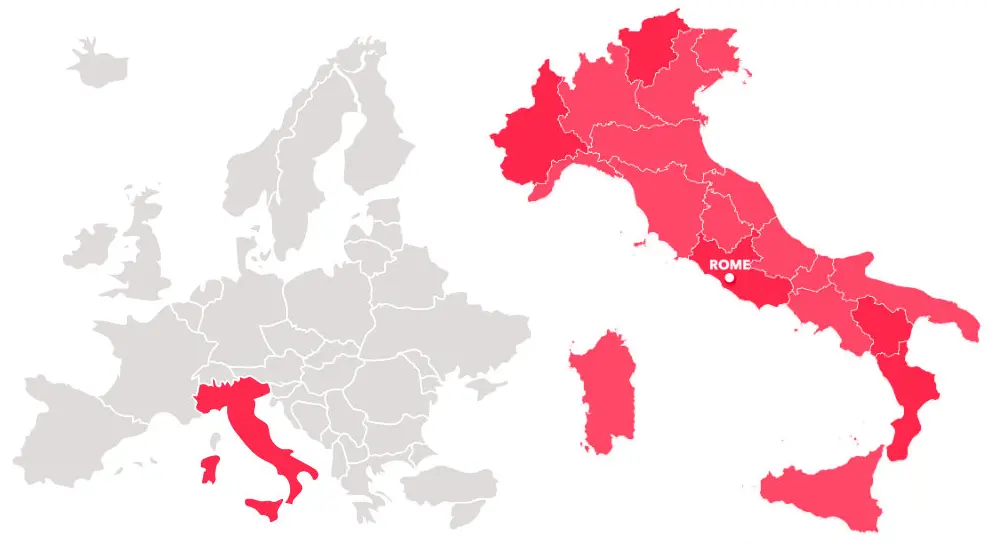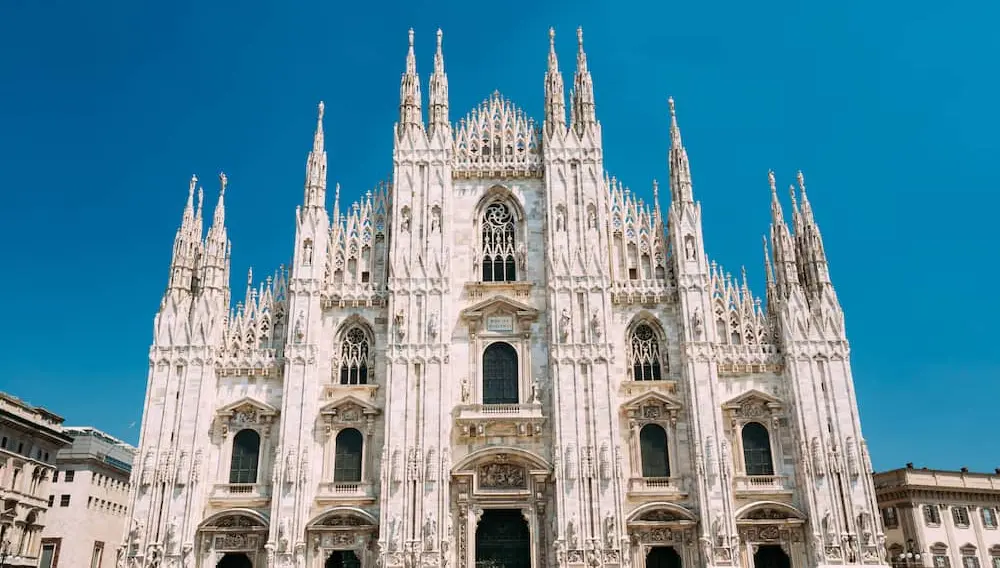Italy has a rich history, so are the languages of Italy. The official language that is spoken in Italy today is Italian. Over 59,000,000 million people speak Italian in Italy. Other regional languages of Italy are coexisting with this official language in Italy. We shall be looking at all these languages that you will experience when you get to Italy.
Of the total population, 93% is native Italian speakers. Around 50% of the Italian population speaks a regional language as a mother tongue. The Italian language is more of a Romance language, and it has its roots in the Tuscan dialect of the Italo-Dalmatian subgroup. It is closely related to Latin than to any other language.
Minority Languages of Italy
There are several minority languages in Italy, and the majority of them are classified as endangered. In addition, some of the minority languages have been classified as historical by the government of Italy.
The following are the minority ancient languages of Italy: French, Greek, German, Sardinian, Albanian, Occitan, Croatian, Slovene, Ladin, Friulian, Catalan, and Franco-Provencal.

Check out Oldest Languages of The World.
Sardinian
Sardinian stands out among the list above, and an estimated 1 million speakers speak it. You will find the majority of the speakers on the island of Sardinia. This dialect is considered an indigenous language in Italy. It is divided into two – Logudorese and Campidanese. They are considered as principal languages of Italy today.
The Sardinian varieties are considered endangered dialects because only 68.4% of the population speaks the language. Only 13% of the children are considered fluent in this dialect.
Let us now take a look at some of the other minority languages of Italy aside from the official Italian language and the minority languages that we have so far mentioned:
Griko Language
The descendants of the Ancient Greek community in Southern Italy speak Griko language. This language can boast of 40,000 and 50,000 considered second speakers of the language, which belonged to the Hellenic language group.
German Language
There are German speakers in South Tyrol and in the northeastern Italian regions, which were formally under the influence of the ancient Austria-Hungarian Empire. In addition, we have 300,000 speakers that are classified as Italian Greek Germans.
Read Also: Languages of Germany to find out the influence of languages of Italy in Germany.
Slovene Language
There are about 80,000 estimated speakers of this language that reside near the border with Slovenia. Therefore, you are going to find these native speakers precisely in the northeastern region of Friuli-Venezia Giulia.
Arbëreshë Albanian
Arbëreshë Albanian is a minority language scattered in Italy due to the influence of migrants to Italy. You will see speakers of this language in Avellino, Potenza, Taranto, Cosenza, Catanzaro, and Palermo provinces in Southern Italy and central Sicily. There are an estimated 80,000 to 100,000 speakers of this language in present-day Italy.
Vastese Language
Vastese is a rare language that the inhabitants of Vasto town speak today. Most of the speakers are between the ages of 80 to 90 years which clearly shows a bleak future. Middle-aged adults have only a sparse command of this language. The children have little or no comprehension of this language. This is considered a separate language different from Italian.
Italian Greek Language
Italian Greek is one of the languages that are listed as endangered in Italy. The Italian Greek dialect can be found only in Italy- Grecìa Salentina in Puglia and Bovespa. There are only an estimated 15,000 to 20,000 speakers of this language in Italy. This language is considered one of the last vestiges of Greek heritage in Italy.
Molise Croatian Language
Molise Croatian is another official language in Croatia but has found footing in Italy as one of the minor languages on offer. There are about 3500 speakers of the language today. So we have the Italian Croats population in Italy today, and this is the language of their heritage that you will find them speaking today in Italy.
Molise Croatian is also the popular language that is spoken through the Campobasso province of Italy. But, unfortunately, this is one of the gravely endangered languages of Italy today because the speakers sum up to a paltry 1000 people in Italy today.
Toitschu Langauge
Toitschu is a dialect of Alemmanic. You are going to get the speakers of this language in Piedmont and Aosta Valley of Italy. It is not mutually intelligible standard German or Swiss.
Regional Languages of Italy
Let us now consider regional languages that are spoken in Italy:
Cimbrian Language
This is a language that has its roots in Western Germany and it is spoken in the following towns in Italy: Giazza (Glietzen, Ljetzen), Roana (Rabam), and Lusern in Sette and Tredici Communi (Sieben and Dreizehn Gemeinde).
Italkian
Italkian is the regional language spoken in the urban centers of Italy such as Rome and central-northern Italy.
Piedmontese Language
The latin phrase “ad pedem montium” signifies “piedmont”, which means at the foot of the mountains. This is predominantly thanks to the Piedmont region’s position at the base of the alps.
Turin is regional capital. You will come across this language as well, which has a considerable French influence spoken as one of the regional languages in Italy.
Lombard Language
This language is distinct from standard Italian. Lombard is composed of a group of dialects that are intelligible to each other’s speakers. Some special dialects might be needed for the speakers of this regional language to understand each other fully.
The capital city of Lombardia region is Milan.

Neapolitan-Calabrese Language
This is the language whose influence is in Campania and Calabria provinces. This language is considered to be the dialect of Sicilian. Meanwhile, Neapolitan and Calabrese (both variants of this dialect) are reported to be different from each other.
Emiliano-Romagnolo Language
It is structurally different from Italia, and you will find people that speak this dialect in and around the territories of Emilia and Romagna. There are several dialects of this language; they include Western Emiliano, Central Emiliano, Eastern Emiliano, Northern Romagnolo, Southern Romagnolo, Mantovano, Vogherese-Pavese, Lunigiano.
Conclusion: Languages of Italy
Several languages are spoken in Italy aside from the official Italian language. Italy is indeed a multi-lingual country. You will get to see all the languages mentioned above when you get to Italy.
